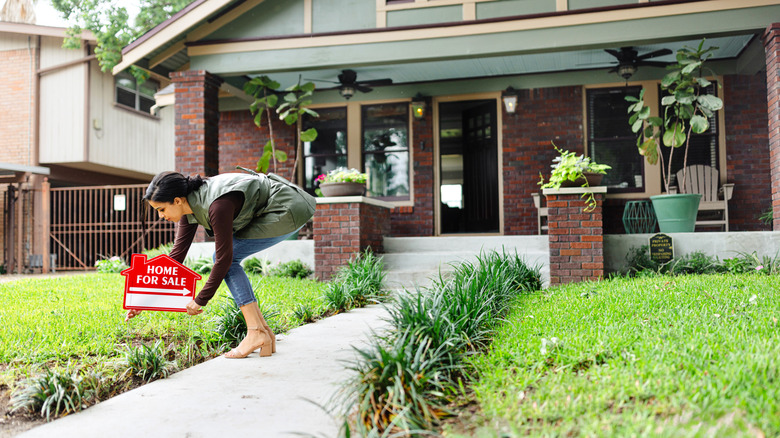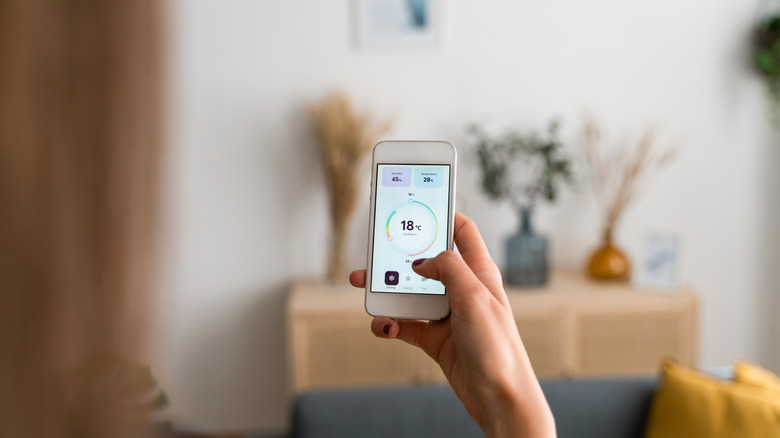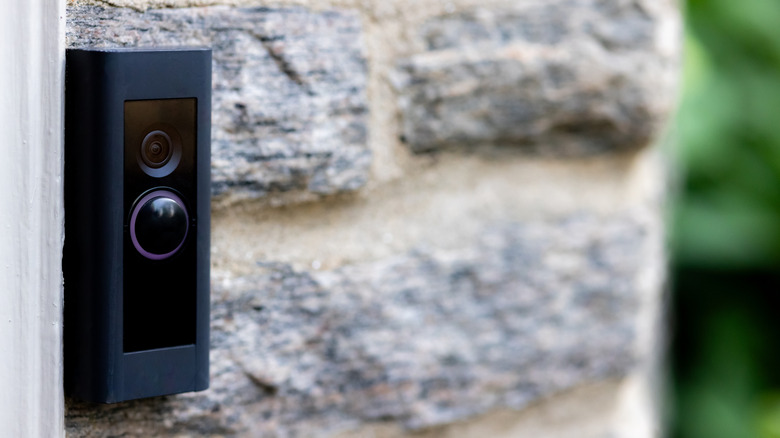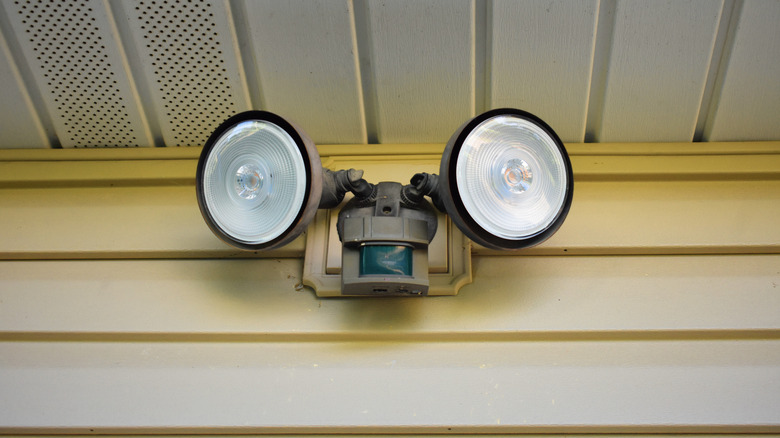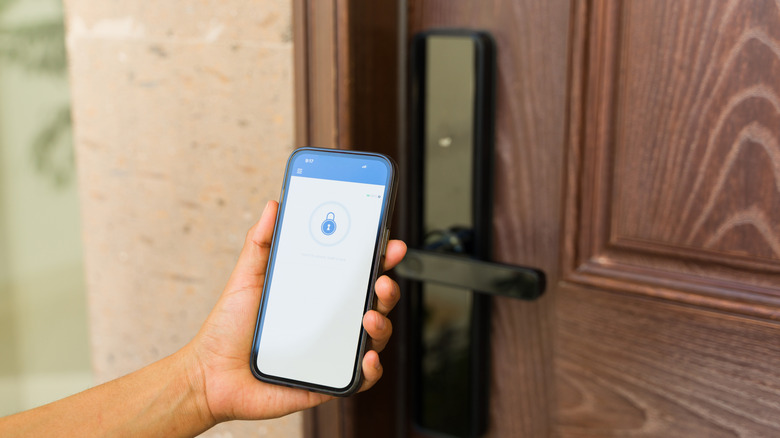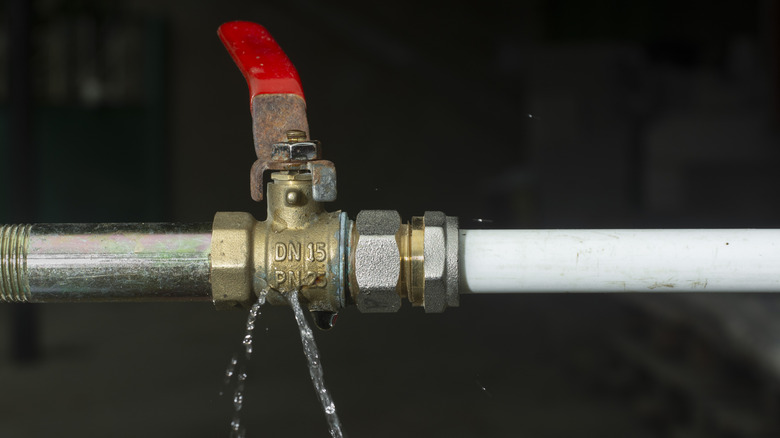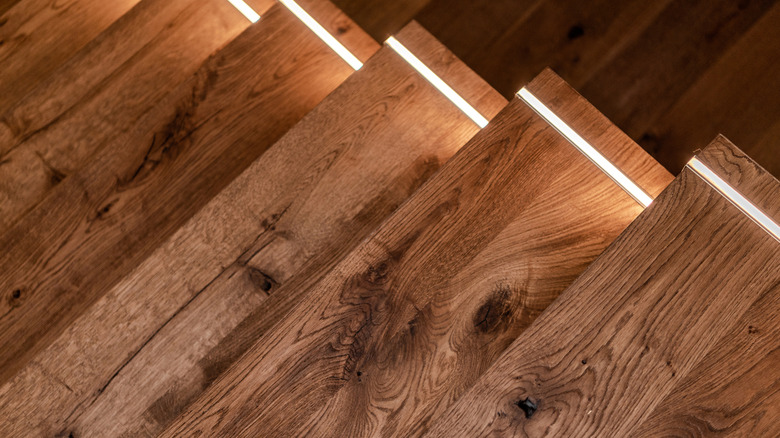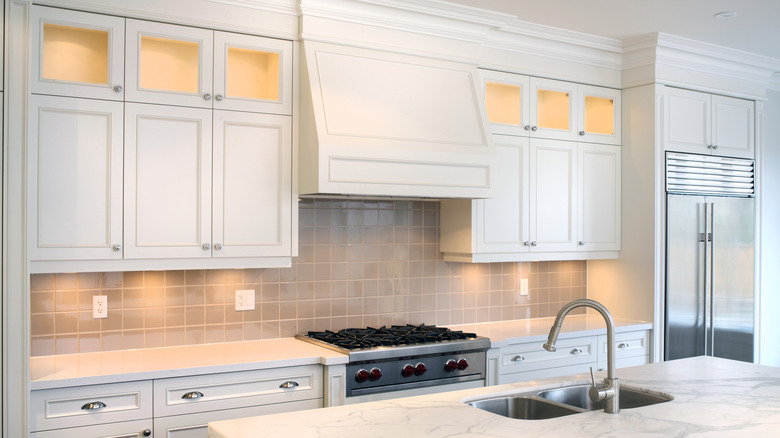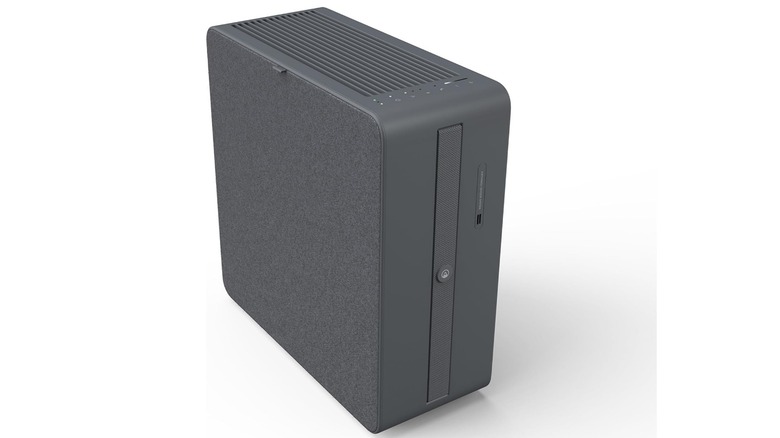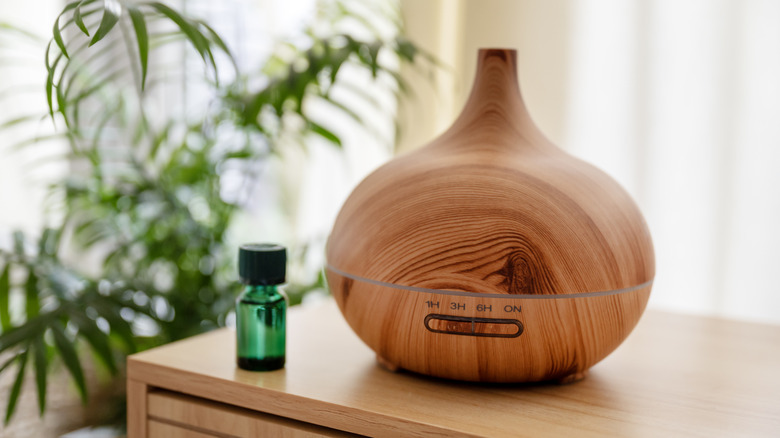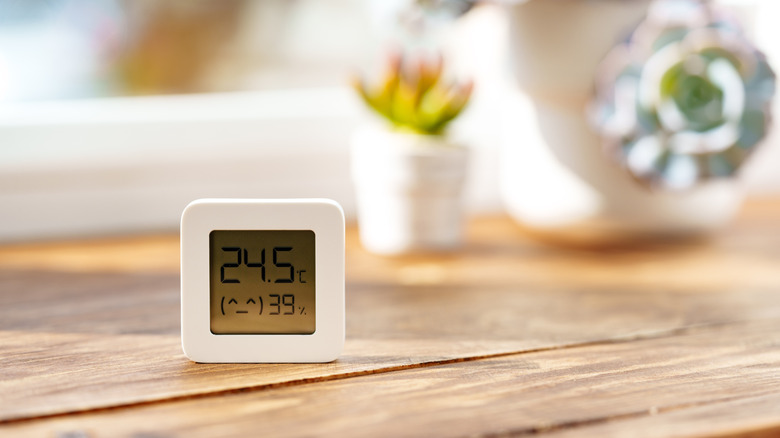Selling Your Home? Here Are 9 Quick Tech Upgrades To Make Before You Do
First impressions are everything when you're selling your home. You want a buyer to feel welcome in your space and help them picture what it's like to live there. But buyers don't have to know that you've made a few last-minute upgrades to the home to make it more appealing — what they don't know can't hurt them (at least, not these things). Upgrades should look like they've been part of the plan all along, not last-minute add-ons in order to squeeze more money out of the sale.
A few simple changes can make a big difference in how your space looks and feels. You don't have to spend a ton of money getting your home ready to market. We're not talking paint, new floors, and a new roof. Instead, it's helpful to focus on the little things, like some thoughtful lighting, personal security, and the way your air smells. The details matter, and these nine quick tech upgrades can help you create a stronger first impression that will build buyers' confidence.
A word about making home tech upgrades before selling
There's some smart home technology on this list, because that's the world we live in, but sellers should know that not everyone is in tune with the smart home movement. Some people are resistant to new technology, and having smart home devices that stay with the home could be a deal breaker to them. You might also have buyers bringing their own equipment to the space.
If you plan on infusing any type of smart device into your home-selling strategy, anticipate potential questions or issues that might arise. You'll need to explain to the new owners how these devices work, how to access them (including, how to program their own lock codes on a smart lock), and any warranties or subscription services that come with them. The realty company may also need information, especially if it impacts their access to the home for showings. You'll need to include them in the sale agreement, with an option to remove these devices with the sale of the house if the new owner chooses.
Doorbell cam
The best smart doorbell cameras offer an easy entry in the home tech niche. They're inexpensive, easy to install, and double as a layer of security for when you're away from home. With the rise of "porch pirates" and general curiosity in knowing what's happening at home while you're away, a smart doorbell cam might be an attractive selling point for some buyers.
The Wyze Video Doorbell Pro cam is a good option, especially if you want bang for your buck and not a lot of hassle. It combines a door chime with an internet-connected camera that sends alerts to your smartphone or smartwatch when it detects motion at the door. It installs in about five minutes or less if you're not using a hardwired connection: just download the app, plug the chime into a wall outlet, connect the device to your home's internet, and use the enclosed mounting strip to install the doorbell. You don't need a subscription service to use it, but there is an optional paid plan that gives you longer videos and more data storage. You can get the Wyze Video Doorbell Pro for about $100.
Outdoor motion sensing lights
Motion-sensing lights offer another variation of low-grade home security. They only turn on when they detect motion, such as a car pulling into the driveway or someone walking up to the home. But they're not just for security; they're also for safety. For example, older homeowners might appreciate a little extra light as they make their way into a dark house at night.
Outdoor motion sensing lights are usually hardwired into the home and may require an electrician to install. They can be relatively inexpensive, with a two-light system costing anywhere from $30 to $200 or more. Another option is to skip the hardwiring and get solar-powered motion sensing lights, like the Urpower solar lights. These floodlights can be mounted on eaves, decks, fences, walls, or anywhere you need extra illumination. When they detect motion, they automatically turn on for 30 seconds. They charge during the day and won't run up your power bill.
Smart locks
Another easy foray into smart home tech, smart locks remove hassles like physical keys and add an extra sense of security to your front door. These locks let you use access codes or your smartphone to unlock your door, which reduces your risk of getting locked out and having to call a pricey locksmith. You can monitor who's coming and going from your home and even lock and unlock doors remotely. Your realtor might also thank you when they can use a designated code rather than dealing with lock boxes.
Schlage smart door locks tend to be reasonably priced, depending on the features you want. You can take your pick of a programmable electronic keypad or advanced features like Wi-Fi connectivity for remote access and built-in alarms. There's no hardwiring required (they're battery operated), and most homeowners can install these themselves. They also come in various finishes and styles, including deadbolts or just basic door locks.
Leak detectors
A leak — or any sign of a past leak — can be a major turnoff to buyers. Leaks can cause extensive damage to your home, increase the risk of mold, and send a message to buyers that the house might require more work than they want. If you're still occupying the home while trying to sell, you'll be able to spot leaks and fix them proactively. But if you've already moved out and onto your next adventure, you'll want an easy way to monitor for leaks that might kill a potential sale.
A smart leak detector can be a home seller's best friend, even if you're still living in the home. Leak detectors monitor water flow through pipes and sense moisture in designated areas, and proactively close the valve if it detects a leak. This helps protect your entire property from puddles, rotting baseboards, slip and fall hazards, and mold. Smart leak detectors will also send alerts to your phone so you can react right away.
LED strip lights for stairs
In many cases, prospective buyers will see a listing photos first, then decide whether it's worth their time to view it with a real estate agent. Good lighting will make your listing photos pop, and one area that often goes overlooked is the staircase. LED strip lights can give your stairs a super quick makeover and look flattering in listing photos.
These LED strips are easy to install. Measure and cut the length of the strip you need, peel off the adhesive backing, and stick them where you want them to go (e.g., under the lip of each step). Plug them into a power source, and voila! You have attractive stair lighting that's not only functional but also boosts your home's first impression. GE's Cync Smart LED strip lights add a smart element, allowing you to control them from your smart home device. You can set different colors and lighting schedules from your phone, including aligning them with your natural circadian rhythm.
Under-cabinet stick-on lights
Sticking with the theme of good lighting, a little extra light in the kitchen is never a bad idea. Stick-on lights for underneath cabinets are a great opportunity to bring more lighting into one the most important rooms of the house. They're super affordable, plus they'll look great in your listing photos. Adding lights to the underside of your top level cabinets can give the illusion of a bigger, brighter kitchen. It makes the room feel more high end, even though the upgrade itself doesn't cost much.
While you're waiting to sell, you can also enjoy the benefits of under cabinet lighting. They brighten your prep spaces and shine a light on messes left behind on countertops, so you can keep a cleaner kitchen. Since they're stick-on lights, there's no wiring or tough installations to deal with. Just peel and stick where you need them. These under-cabinet lights sell for $17.99 on Amazon for a two pack. They're motion activated and run on rechargeable batteries, so there are no wires to deal with.
Smart air purifier
Buyers coming into your home don't just pay attention to the way your house looks; they also notice how it feels and smells inside. Clean, fresh air is a must, and a smart air purifier will elevate your space in a way that room sprays and air fresheners can't. Air purifiers don't mask smells like fragrances do. Instead, they pull toxins and odors from the air and trap them in filters. They're removing foul odors permanently, which is a plus if you have pets or if a room you don't use often has a stale or musty smell to it
The Airthings Renew smart air purifier is a little pricey but an effective option. It's whisper quiet, which lets you run it even during showings without alerting potential buyers. It detects changes in the air quality and will adjust its fan speed to accommodate. It uses a three-filter approach to keep your home smelling and feeling fresh: A washable pre-filter traps larger particles and debris as a first defense, a HEPA-13 filter traps up to 99.97% of remaining particles, and an active charcoal filter provides a final cleanup for chemicals and smells.
Aromatic room diffuser
Your sense of smell is directly linked to your memories, which is why "scent marketing" is such a powerful tool. It's why certain clothing stores spray their signature colognes on their clothes and in shoppable areas, for example — they're creating a sensory experience to make their brands more memorable. You can take a page from this playbook by using scents in your home.
Rather than spraying air fresheners in every room, consider trading fake fragrances for an aromatic room diffuser. Diffusers like the Asakuki on Amazon for $24.99 use essential oils and evenly disperse them into the air. They're less overpowering and smell more natural, and won't feel like you're trying to cover up a bad smell. They can also be easier on the nose for people with allergies that might struggle with regular air fresheners. If you choose to use an essential oil diffuser, make sure you're using pet-safe scents if you have pets in the home. Tea tree oil, wintergreen, and peppermint oils (among others) can be harmful to your fur babies; lavender and chamomile are better, safer options.
Digital humidity and temperature display
The humidity and temperature of your home might not be a deal breaker, but it can influence the way buyers perceive your home when they're in it. You want them to feel comfortable and that you've taken good care of the home. If your indoor air feels too humid, too drafty, or too dry, it can send all the wrong signals. High humidity can lead to mold, and dry air is just plain miserable. A digital humidity and temperature display can put these unspoken worries at ease with real numbers. Leave it in an obvious spot to send a subtle message to potential buyers that your home is comfortable and well-maintained.
This temperature and humidity digital display is $11.99 on Amazon and shows you the details that matter. You'll know how your home stacks up against the norm so you can take action when humidity is out of balance. The display is easy to set up and use right out of the box, and there's no installation required. Just put it on a shelf or stick it to a wall. Little extras like this can go a long way in showing your home is polished and cared for.
